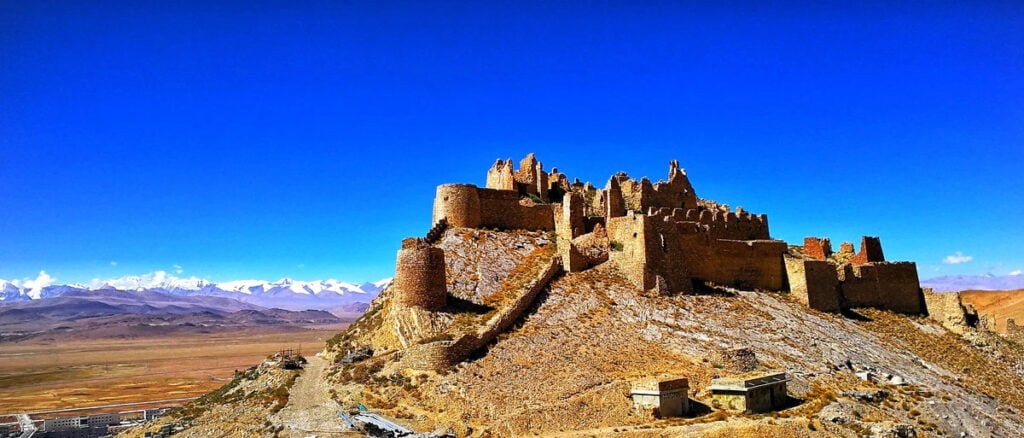An Enthralling Journey to Kampa Fortress
Gampa Fortress, a relic steeped in history, is situated to the northeast of Gampa County town, perched atop a strategically important hill. Constructed from earthen bricks, this fortress is a testament to the region’s rich past.
Kamba Castle: A Historical Fortress in the Himalayas
A Blend of History and Legend
Archaeological experts have dated the fortress to over 600 years old, suggesting its origins in the Phakmodrupa era. In 1903, a British Indian army crossed a pass under the snow-capped mountains and invaded Kamba. Here, they faced strong resistance from the Tibetan people. This historical event is depicted in the movie “Red River Valley.”
German Nazi Expedition and Gangba Castle’s Significance
In 1939, Kamba Castle also witnessed a visit from a German Nazi expedition. These events highlight Gangba Castle’s role as a crucial fortress guarding the Himalayan passage. From its vantage point, one can view the former Kingdom of Sikkim, situated opposite the snow-capped mountains.
The Three Snow Mountain Kingdoms
Geography enthusiasts recall that at the southern foot of the Himalayas lie three snow mountain kingdoms: Bhutan, Sikkim, and Nepal. In 1834, the British East India Company, having acquired tea seedlings from China, sought new tea-growing territories. They found the warm and humid Darjeeling in Sikkim, thus beginning their tea cultivation outside China.

Exploring the Ruins near Gangba Castle
Ten kilometres from Gamba Castle lies the ruins of an ancient temple, its origins now unknown. A cement road from Kamba County leads to this site, accessible by all vehicles. Hardcore off-road vehicles can even reach the mountain’s summit, while others may opt for hiking. At about 4,500 meters altitude, ascending this hill without any roads is a challenge.
Discovering Secret Chambers and Murals
Descending a wooden ladder into the dark underground reveals two secret rooms filled with copper ritual instruments for sacrifices. The walls of these rooms are adorned with exquisite murals, still shining brightly despite years of exposure to the elements. Their craftsmanship rivals that of the Sakya Temple, which is remarkable.
There’s a debate about whether to disclose the site’s coordinates or report it for rescue excavation. However, there’s a belief in observing, experiencing, and leaving without altering the site’s original state. The philosophy is to leave the wilderness as it is and let time stand still, preserving history in its authentic form.
A Glimpse into Medieval Europe
Stepping into the Kampa Fortress is like walking into a medieval European castle. Despite enduring centuries of weathering and war, the fortress still proudly displays its resilience. The steep hillsides adorned with the remnants of its walls and battlements speak volumes of its once-imposing structure. The setting sun casting shadows over these ruins adds a dramatic and timeless quality to the site.
A Timeless Monument
The Kampa Fortress, though now in ruins, continues to stand as a proud reminder of the area’s historical significance. Its strategic location and enduring architecture make it a fascinating destination for history enthusiasts and travellers seeking a glimpse into Tibet’s past. The fortress not only enriches the cultural landscape of Kampa County but also offers a unique window into the architectural styles and military strategies of ancient times.

